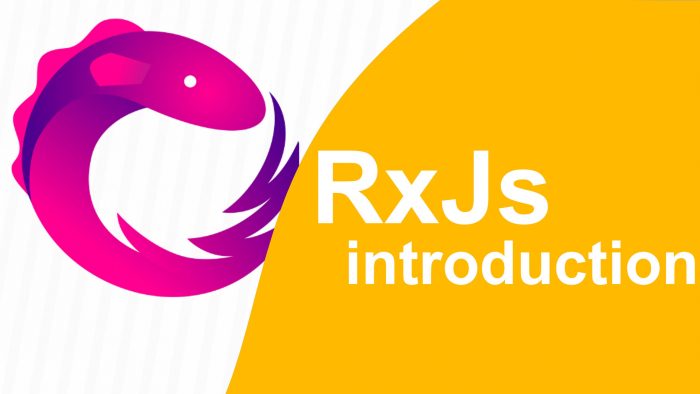In the rapidly evolving landscape of web development, frameworks have emerged as indispensable tools that streamline the coding process and enhance productivity. By providing a structured foundation for building applications, frameworks not only facilitate adherence to best practices but also promote code reusability, scalability, and maintainability. This article aims to explore effective strategies for utilizing frameworks in web development, highlighting the benefits of various frameworks while also addressing common pitfalls developers may encounter. From choosing the appropriate framework based on project requirements to implementing advanced features and optimizing performance, this discussion will serve as a comprehensive guide for developers seeking to maximize efficiency and quality in their web projects. Whether you are a seasoned professional or a newcomer to the field, understanding and leveraging these strategies can significantly impact your development workflow and overall project success.
Table of Contents
- Understanding the Role of Frameworks in Modern Web Development
- Selecting the Right Framework for Your Project Needs
- Implementing Best Practices for Framework Integration
- Maintaining and Updating Frameworks for Long-Term Performance
- Closing Remarks
Understanding the Role of Frameworks in Modern Web Development
In the rapidly evolving landscape of web development, frameworks serve as the backbone for building robust, scalable, and maintainable applications. They offer a collection of standardized tools, patterns, and best practices, enabling developers to focus on functionality rather than getting bogged down in repetitive tasks. By leveraging frameworks, teams can achieve consistency across projects, ensure code reusability, and accelerate development cycles. Moreover, frameworks often come equipped with built-in features like routing, state management, and UI components, which can significantly enhance productivity.
When utilizing frameworks, it is crucial to select one that aligns with the specific needs of the project. Different frameworks cater to varying requirements and use cases, influencing factors such as performance, scalability, and community support. Here are some potential criteria to consider when choosing a framework:
- Project Requirements: Analyze the scope and complexity of the project.
- Performance: Evaluate the framework’s speed and efficiency.
- Community Support: Consider the availability of resources and active user base.
- Learning Curve: Assess the ease of onboarding for new team members.
To provide a more structured approach, consider the following table summarizing popular frameworks and key characteristics:
| Framework | Primary Usage | Learning Difficulty |
|---|---|---|
| React | Frontend Development | Medium |
| Angular | Single Page Applications | High |
| Vue.js | Progressive Interfaces | Low |
| Django | Backend Development | Medium |
Selecting the Right Framework for Your Project Needs
Choosing the appropriate framework for your web development project demands careful consideration of several factors. Start by assessing your project’s specific requirements, such as performance expectations, scalability potential, and the depth of functionality needed. It’s also critical to evaluate your team’s expertise; selecting a framework that aligns with their skills can significantly reduce learning curves and foster productivity. Some popular frameworks to consider include:
- React – Great for building dynamic single-page applications.
- Angular – Ideal for enterprise-level applications with rich functionality.
- Vue.js – Offers easy integration with existing projects and straightforward learning for beginners.
Another essential aspect to factor into your decision is the community support and ecosystem surrounding the framework. A strong community not only helps in resolving issues but also provides a wealth of plugins and libraries that can expedite development. Below is a comparison of several popular frameworks based on community activity and ecosystem richness:
| Framework | GitHub Stars | NPM Package Downloads (monthly) |
|---|---|---|
| React | 200k+ | 10M+ |
| Angular | 75k+ | 3M+ |
| Vue.js | 190k+ | 2M+ |
Implementing Best Practices for Framework Integration
Integrating frameworks into your web development workflow can streamline processes and enhance productivity. To ensure a successful integration, developers should adopt several key practices. First, choose the right framework that aligns with your project requirements and team expertise. Consider factors such as performance, scalability, and community support when making your selection. Additionally, establishing a consistent folder structure and coding standards will promote organization and improve collaboration among team members.
Furthermore, take advantage of version control systems to manage your framework effectively. Utilize branching strategies to isolate features, facilitating smoother integration and reducing conflicts. Regularly update the framework to benefit from the latest features and security patches, ensuring your application remains robust. Lastly, provide comprehensive documentation and conduct periodic code reviews to embed best practices in your development cycle. This practice not only aids in maintaining quality but also fosters an environment of continuous learning and improvement.
| Best Practice | Description |
|---|---|
| Framework Selection | Choose a framework that fits the project’s needs. |
| Folder Structure | Establish a clear and consistent organization. |
| Version Control | Use branching for feature isolation and conflict reduction. |
| Documentation | Maintain comprehensive records of practices and decisions. |
Maintaining and Updating Frameworks for Long-Term Performance
To ensure that your frameworks remain efficient and relevant over time, it’s crucial to establish a proactive maintenance routine. This involves regularly reviewing your frameworks to assess their compatibility with the latest web standards and technologies. Key practices to incorporate include:
- Regular Audits: Periodically evaluate the frameworks and libraries in use to identify deprecated features or outdated dependencies.
- Documentation Updates: Keep documentation up-to-date to reflect any changes or new features that may be introduced across versions.
- Version Control: Utilize version control systems to manage updates and modifications efficiently, preserving a history of changes.
Moreover, staying engaged with the community surrounding the frameworks can significantly enhance long-term performance. Active participation helps you stay informed about upcoming releases, best practices, and optimization techniques. Consider the following strategies:
- Community Contributions: Contribute to open-source projects or forums to remain connected with other developers.
- Training and Workshops: Participate in training sessions to learn about new features and best practices firsthand.
- Performance Monitoring: Implement analytics to track performance metrics and identify areas for improvement.
| Strategy | Description |
|---|---|
| Regular Audits | Systematic checks to ensure compatibility with new web standards. |
| Documentation Updates | Keeping guides and resources up-to-date for accuracy. |
| Community Engagement | Active participation in forums and contribution to projects. |
Closing Remarks
effectively utilizing frameworks in web development requires a strategic approach that aligns with your project goals and team capabilities. By understanding the strengths and weaknesses of various frameworks, developers can make informed choices that enhance productivity, maintainability, and scalability. Implementing best practices such as modular design, prioritizing documentation, and embracing community resources can further streamline the development process. As web technologies continue to evolve, keeping abreast of updates and trends within the framework landscape will be essential. Ultimately, the key to successful web development lies not only in the frameworks chosen but also in the thoughtful application of these strategies to create robust, user-centric applications. By committing to continuous learning and adaptation, developers can leverage frameworks to their fullest potential, driving innovation and efficiency in their projects.






